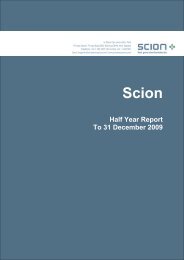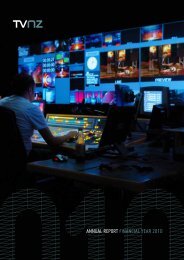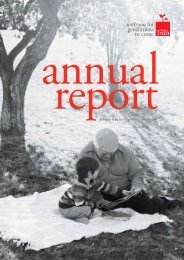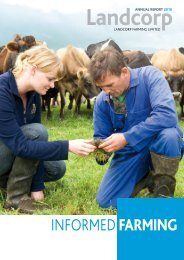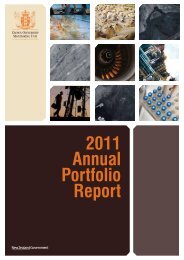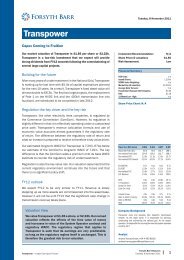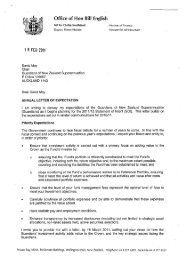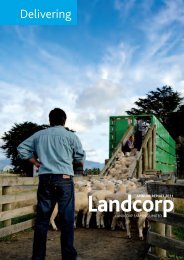MetService - Annual Report 2011 - Crown Ownership Monitoring Unit
MetService - Annual Report 2011 - Crown Ownership Monitoring Unit
MetService - Annual Report 2011 - Crown Ownership Monitoring Unit
Create successful ePaper yourself
Turn your PDF publications into a flip-book with our unique Google optimized e-Paper software.
Chairman’s & CEO’s report<br />
Year in review<br />
Radar roll-out improves weather picture<br />
In 2007, <strong>MetService</strong> began a $12 million<br />
radar network expansion programme, for<br />
nine weather radars around New Zealand.<br />
This comprehensive network will give us<br />
excellent coverage of the country and<br />
surrounding marine areas, as our long<br />
coastline and mountainous terrain pose<br />
major challenges for weather observation.<br />
The programme is on schedule; with the<br />
commissioning of the first weather radar<br />
on Mahia Peninsula, Hawke’s Bay last<br />
year, and the recent completion of the<br />
Bay of Plenty radar near Rotorua, built on<br />
a 12 metre high tower and enclosed in a<br />
fibreglass dome.<br />
Steady progress is being made on the<br />
Hokitika radar for a November <strong>2011</strong><br />
go-live date. This radar will detect and<br />
monitor rain out to 300km from the site,<br />
greatly improving our ‘weather picture’<br />
over the whole West Coast region and<br />
out over the Tasman Sea.<br />
Work has also begun on the fourth new<br />
radar, to be located in Northland.<br />
Road weather network completed<br />
In the last three years, <strong>MetService</strong><br />
has worked in close collaboration with<br />
the NZTA to commission a total of<br />
42 road weather stations throughout<br />
New Zealand – the subject of our feature<br />
case study on page 6.<br />
Notably, during this past year <strong>MetService</strong><br />
built and installed 22 of these Automatic<br />
Weather Stations (AWS) across a broad<br />
area of the South Island, many during the<br />
harsh winter months. The roll-out was<br />
achieved on time and within budget.<br />
Severe weather forecasting<br />
The year brought more than its share of<br />
severe weather events, during which the<br />
forecast room team were invaluable.<br />
Some of the most memorable of these<br />
events were:<br />
• A week-long cold southwesterly in<br />
mid-September 2010 that brought<br />
widespread gales, rain and snow, with<br />
heavy snow leading to the collapse of<br />
the roof at Stadium Southland.<br />
• Heavy rain on the east coast of the<br />
North Island in October 2010, with<br />
rainfall in some parts of Gisborne<br />
similar to that during the infamous<br />
Cyclone Bola.<br />
• The largest number of severe weather<br />
warnings of any January since records<br />
began, including two tropical systems<br />
which caused major flooding in the<br />
upper North Island.<br />
• An Easter storm in which parts of<br />
Hawke’s Bay received rainfall of<br />
historic proportions, with some stations<br />
recording well over 500mm in three<br />
days. At the storm’s peak, rainfall was<br />
so high that even forecasters and local<br />
council hydrologists initially didn’t<br />
believe the reports!<br />
89%<br />
Waiouru<br />
Probability of Detection<br />
(POD) of severe gales, 17%<br />
False Alarm Ratio (FAR)<br />
82%<br />
Probability of Detection<br />
(POD) of heavy snow, 10%<br />
False Alarm Ratio (FAR)<br />
South Automatic Weather Station<br />
on the Desert Road<br />
14 Meteorological Service of New Zealand Ltd <strong>Annual</strong> <strong>Report</strong> <strong>2011</strong>



